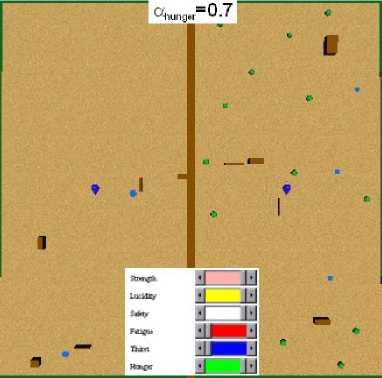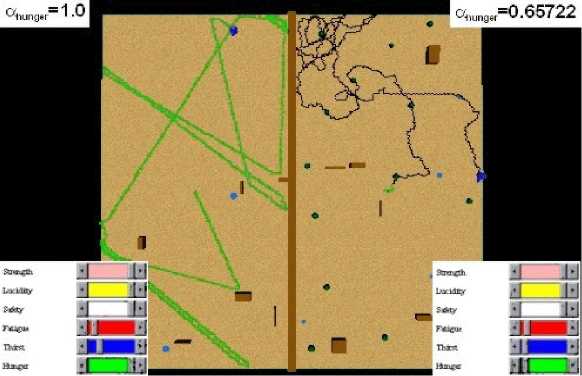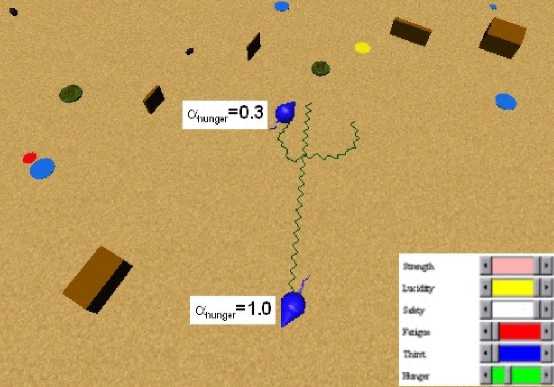
Figure 36. Initial state of the experiment.

Figure 37. Behaviour patterns executed by the animats in their
respective environments.
We now can set two animats with the same degree of hunger, but with different "
values. The animat with a high " , since he learned that food is scarce and will be difficult to
find, will begin to explore. Meanwhile, the animat with a low " will wander, because he learned
that he will find abundant food with little effort, and thus allows himself to wander, and will not
explore until his hunger level is higher. An example of these behaviours can be seen in Figure
38.

Figure 38. Behaviour patterns for animats with the same
degree of hunger, but with different values of "i for hunger.
78
More intriguing information
1. The name is absent2. Evaluating Consumer Usage of Nutritional Labeling: The Influence of Socio-Economic Characteristics
3. LIMITS OF PUBLIC POLICY EDUCATION
4. The name is absent
5. The effect of globalisation on industrial districts in Italy: evidence from the footwear sector
6. The name is absent
7. Imperfect competition and congestion in the City
8. THE DIGITAL DIVIDE: COMPUTER USE, BASIC SKILLS AND EMPLOYMENT
9. The Dictator and the Parties A Study on Policy Co-operation in Mineral Economies
10. The name is absent